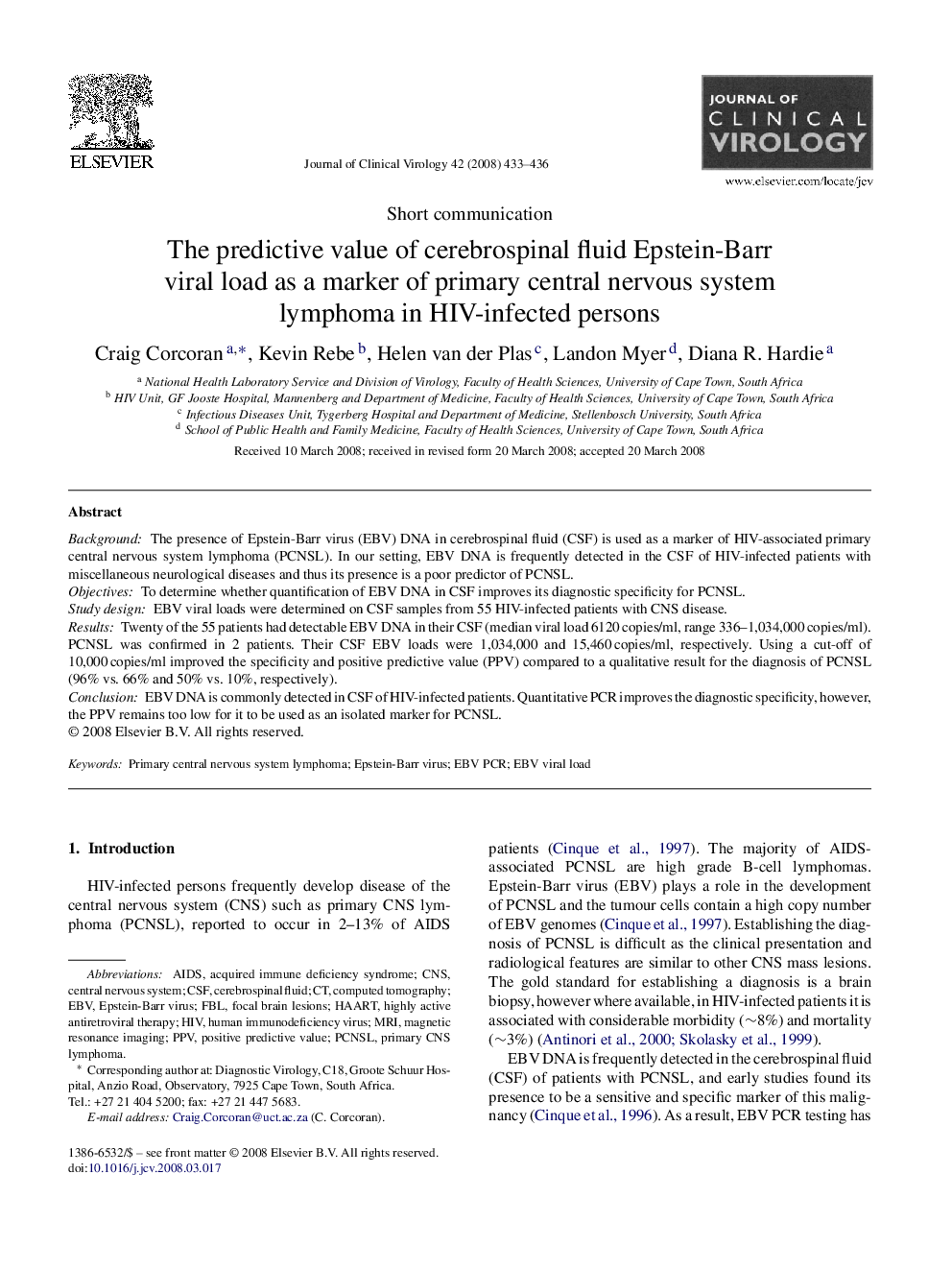| Article ID | Journal | Published Year | Pages | File Type |
|---|---|---|---|---|
| 3370299 | Journal of Clinical Virology | 2008 | 4 Pages |
BackgroundThe presence of Epstein-Barr virus (EBV) DNA in cerebrospinal fluid (CSF) is used as a marker of HIV-associated primary central nervous system lymphoma (PCNSL). In our setting, EBV DNA is frequently detected in the CSF of HIV-infected patients with miscellaneous neurological diseases and thus its presence is a poor predictor of PCNSL.ObjectivesTo determine whether quantification of EBV DNA in CSF improves its diagnostic specificity for PCNSL.Study designEBV viral loads were determined on CSF samples from 55 HIV-infected patients with CNS disease.ResultsTwenty of the 55 patients had detectable EBV DNA in their CSF (median viral load 6120 copies/ml, range 336–1,034,000 copies/ml). PCNSL was confirmed in 2 patients. Their CSF EBV loads were 1,034,000 and 15,460 copies/ml, respectively. Using a cut-off of 10,000 copies/ml improved the specificity and positive predictive value (PPV) compared to a qualitative result for the diagnosis of PCNSL (96% vs. 66% and 50% vs. 10%, respectively).ConclusionEBV DNA is commonly detected in CSF of HIV-infected patients. Quantitative PCR improves the diagnostic specificity, however, the PPV remains too low for it to be used as an isolated marker for PCNSL.
